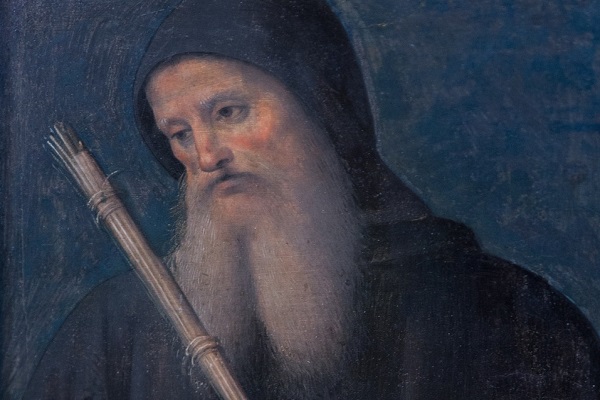
The feast of Saint Benedict will be celebrated by Catholics around the world on July 11.
St. Benedict is the patron saint of Europe as a whole, of students, sufferers of kidney disease and of poisoning. He lived from 480 AD up to 543AD. Though there is limited biography written about Benedict’s life, the saint is considered to be among the top contributors to the various Catholic traditions up to today. St. Benedict was canonized by Pope Honorius III in 1220.
July 11 is The Feast of Saint Benedict[/tweetthis]
St. Benedict’s story
Benedict came from an affluent family in Nurcia, Italy. He is also the twin brother of Scholastica who was also later on canonized as a saint. Together with a personal nurse or aid, Benedict was sent to Rome to study. Among the courses of interest back then was rhetoric or the art of persuasive speaking. But the young Benedict lost that interest to pursue his education when he saw how rhetoric was used in a negative way rather than to convey the truth. He also saw how students and life in the city in general focused on vices and pleasures instead of spirituality and the truth.
This made Benedict give up his wealth and inheritance and chose to live in a small village. But worldly pleasures still haunted him in the village so he decided to live a hermitic life at the Subiaco Mountains following directions of another hermit named Romanus. While living in a cave, the Devil tempted Benedict by posing as a lovely woman. But Benedict resisted by rolling his body into a thorn bush.
Upon learning his holiness, a group of monks asked for his guidance and leadership but they eventually tried to poison Benedict after experiencing his strict rules. It is said that the cup filled with poisoned drink shattered after Benedict prayed over it. Another set of monks followed Benedict. They were more obedient to Benedict, urging the saint to build monasteries for each of the twelve monks.
The Monte Cassino was considered the major monastery built by Benedict, where the tradition of monasticism has its roots. Benedict built the larger monastery to house monks, disciples, would-be priests and all other individuals pursuing a religious life. The saint preferred a whole community setup with a leader and set of rules instead of small and dispersed monasteries.
Another miracle attributed to St. Benedict is the story of how he made oil overflow in a jar after praying to God, after the monastery’s cellarer refused to give a little oil to a beggar because the jar is nearly empty.
Contributions of St. Benedict
St. Benedict initiated the ascetic and monastic system for the Catholic religion. That is, the need for church and spiritual leaders to renounce worldly pursuits, pleasures and materials things and devoting one’s self to purely religious and spiritual work. The saint founded the idea that would-be leaders of the church should live separately and as a community in monasteries following the directives of an abbot or head priest.
If you will ask any Catholic priest, he certainly knows the Rule of Saint Benedict. The Rule is a set of guidelines or wisdoms of Benedict that tackled how church leaders should run a monastery, the church in general and most importantly, it contained instructions on how to live a spiritual life.
The Middle Ages is also alternately called as the Benedictine centuries because the saint is the key influence to the advancement of European civilization at that time. St. Benedict was also the one who made instructions that church leaders should critically study, learn and imbibe the details and lessons of the Scriptures instead of simply memorizing and reciting them at masses.
